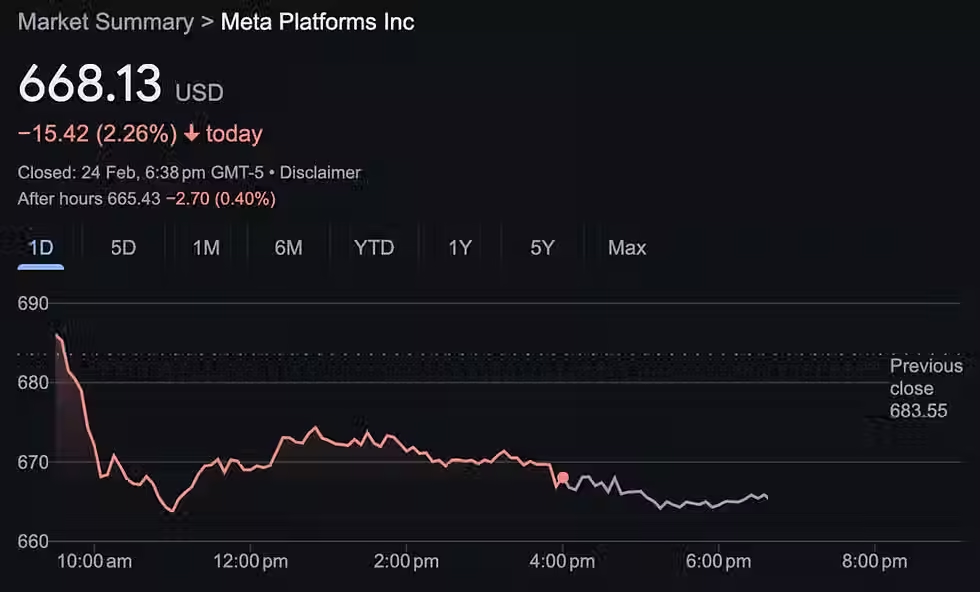Hidden Gems in the Indian Stock Market
- Buffett Online School

- Oct 19, 2023
- 6 min read

As investors, the continual expansion of our knowledge and the broadening of our circle of competence are imperative objectives. In the present context, we are inclined to extend our horizons and boundaries within the investment realm.
At Buffett Online School, we also believe in investing in great companies you understand, and utilizing Free Investing Resources to help you start your financial freedom and investment journey is one of the best ways to learn.
Recently, Chloe interviewed Ankush, a doctor conducting postdoctoral research, particularly in predicting stock market movements. His approach has yielded impressive results, with some of his investments in the Indian stock market gaining up to 400% in just two years. Such remarkable growth is indeed fascinating.
Ankush originally came from Northern India and earned his Ph.D. in Bangalore. His expertise is in using math to make predictions about things that change over time, especially when buying and selling stocks. He's also someone who invests his money in the stock market.
India has many young people, mostly around 27 to 28. This is important because it means India has a good chance for more growth and making money in the future. India has also been getting better and richer over the years, partly because it changed some rules and started doing business with other countries in the early 1990s.
They've also had more new businesses starting up, using computers more, having a stable government, many people buying things, and many young folks. India's money-making (GDP) has increased a lot, about twice as much, from 5.5% to 11.6%, in the last 15 years. Even though there are still problems, India is moving in the right direction.

One big reason for India's success is its young people. Most of the folks there are under 30 years old, which helps the country grow and make more money.
On the other hand, some countries, like Japan, have many older people and not as many young ones. This makes it harder for them to grow their economy because older people can't work as much, and they need more help from the younger ones. India is different because it has a lot of young people, making it an excellent place to invest.
In addition to having many young people, India has many new babies. This means the population is growing, which is good for the country's future.
According to IMF growth projections, India is expected to achieve a 6.3 percent growth rate in 2024, which is noteworthy among other countries. India is rapidly growing, resembling an upward transition on an S-shaped curve. While it faces challenges that need addressing, India's progress in the global economy is evident.

Regarding economic indicators, India's price-to-earnings (PE) ratio is relatively high compared to major countries, indicating investor confidence.

However, India still appears undervalued when considering the price/earnings-to-growth (PEG) ratio, which reflects market valuation relative to growth. The PEG ratio factors a country's growth rate alongside its PE ratio, providing a more comprehensive view of market valuation.
Comparing the PE ratios of the United States and India requires accessing specific values we don't currently have. It's essential to consider both PE and PEG ratios to assess market valuation accurately.
Historically, India's PE ratio remains undervalued, especially compared to the median PE since 2004. The temporal view suggests that India's market is not overvalued, with the PE ratio at a support level.
Additionally, Bloomberg's data indicates a very low probability of a recession in India, thanks to a combination of export and import activities and a thriving domestic economy. Similarly, countries like Indonesia and Saudi Arabia show minimal recession probabilities, reflecting their robust economic growth.

Understanding these things about India's population and economy can help investors decide where to put their money. Now, let's continue exploring India's growth story and investment potential.
Ankush elaborated on his investment approach, emphasizing a multi-dimensional strategy that meticulously evaluates numerous critical factors when selecting stocks.

This comprehensive approach considers a range of variables to make well-informed investment decisions. Here's a more detailed breakdown of this approach:
Intrinsic Values: Ankush looks at the intrinsic values associated with a company. This involves a deep analysis of the fundamental worth of a stock, considering factors like assets, earnings potential, and future growth prospects. He assesses whether a stock is trading above or below its intrinsic value.
Financial Track Record: It delves into a company's financial history. He examines past financial performance, including revenue growth, profitability, and debt. A strong track record of financial stability can indicate a promising investment.
Current Results: Ankush pays close attention to a company's financial results, such as quarterly earnings reports. These results offer insights into a company's recent performance and can help identify trends impacting its stock price.
Technical Levels: Technical analysis is another crucial aspect of Ankush's strategy. He uses charts and technical indicators to assess price movements and identify potential entry and exit points. This analysis helps him make more precise timing decisions.
Sectors of Operation: The sector in which a company operates can significantly affect its performance. Ankush considers the sector's growth potential, competitive landscape, and any regulatory or policy changes that may impact it.
Government Policies: Government policies and regulations can profoundly impact businesses. Ankush considers these, analyzing how government decisions affect a company's operations and profitability.
Liquidity: The liquidity of a stock is vital, as it can impact price stability and trading volume. Ankush examines how foreign investors and institutions influence liquidity levels and how they might change over time.
Diversification: Holding a diverse portfolio across different sectors and companies to reduce risk. This investment approach is adaptable and can be applied to various stock markets globally, making it a valuable strategy for investors looking to make well-rounded and informed investment choices.
Ankush stresses that stock prices should not be viewed in isolation but as a composite of past, present, and future elements. Ankush aims to identify undervalued stocks with growth potential by carefully assessing these factors.
He also uses data analysis and custom-coded tools to refine his investment decisions further, particularly when evaluating financial results and technical levels.
Importantly, Ankush's investment approach is adaptable and can be applied to various stock markets globally, making it a valuable strategy for investors looking to make well-rounded and informed investment choices.
Portfolio Diversification

Ankush's portfolio allocation is balanced, with a portion in large-cap, small-cap, and mid-cap companies and an emergency fund and gold.
Here are some advice Ankush gave when diversifying your portfolio through large and small-cap stocks:
Large-cap stocks

When dealing with large-cap stocks or big companies with much market value, we look at how they connect with different parts of the economy. Instead of getting the most profit possible, we aim to have a mix of investments that give steady returns over time.
To pick these stocks, we use a straightforward process that uses tools to find the right ones. We focus on how much money they make and how their sales are growing. We buy these stocks bit by bit when they're on sale without trying to guess the perfect time to buy or sell.
Small-cap stocks

Conversely, when dealing with small-cap companies, the strategy pivots towards an in-depth analysis of their financial fundamentals. Key metrics under scrutiny include profitability and sales growth.
Decision-making in this context adopts an analog approach, where capital allocation varies based on the manager's conviction in a particular stock and their assessment of its growth potential.
While there is no fixed rule governing maximum allocation, it is typically aligned with the manager's confidence level in the specific company. The overarching objective remains the establishment of a well-balanced portfolio that avoids any single stock exerting excessive influence over allocation.
As for portfolio performance, the strategy has made around 23-24% in returns. Some of the stocks in the portfolio have done well, with more than 80% returns.

On the other hand, losses haven't been contained, with the most significant loss at 50%. Usually, the losses are around 20-30%.

It's important to know that the portfolio manager actively manages holdings, continuously assessing and adjusting positions based on prevailing market conditions and individual stock performance. The main goal is to keep getting steady and balanced returns over time.
Additionally, Ankush suggests exploring ETFs (Exchange-Traded Funds) that focus on large and mid-cap companies, value investments, or sectors of interest based on market conditions. He provides examples of ETFs designed for different investment approaches.
To explore the Indian stock market further, refer to this YouTube video, "India Deep Dive," published on Arigato Investor.
This exploration was instigated by her study of "The Joys of Compounding," authored by portfolio manager, profiled in Morningstar's Learn from the Masters series, Gautam Baid. His successful investments in the Indian stock market piqued my interest in diversifying into this market.
Watch the full video of this interview here:
Join Our Free 2-Day BOS Value Investing MBA
At the Buffett Online School, we believe in learning the right investing mindset and system, so we can start cultivating emotional detachment and grow our wealth safely and substantially in the long run.
Our next 2-day BOS MBA Value Investing Online Bootcamp is happening soon! We will teach you how to use Warren Buffett's proven investing method to maximize your portfolio.
Remember, you can cultivate the right investing mindset and unlock your potential to build wealth through intelligent investing. Together, we can create a network of educated investors who make informed decisions and contribute to their financial well-being!
In the meantime, feel free to check out some of our blog posts to continue learning. You can also join our BOS Telegram channel for more investing insights!





Exploring the Indian stock market for hidden gems can be akin to a treasure hunt, where diligent research unveils promising opportunities often overlooked by the mainstream. Much like an essay writing service delves deep into topics to unearth unique perspectives, investors can benefit from thorough analysis and keen observation to identify undervalued stocks with immense growth potential.
Exploring the hidden gems in the Indian stock market can be an exciting venture for investors looking beyond mainstream options. Similarly, just as investors navigate through the nuances of stock markets, authors aiming to shine a light on their literary works can benefit from an author website design service. Crafting a visually appealing and user-friendly website is akin to discovering hidden gems in the literary world, allowing authors to showcase their works, engage with readers, and create an impactful online presence.
Hidden gems in the Indian stock market are akin to the undiscovered treasures in a vast landscape, waiting to be unearthed by astute investors. These companies, often overlooked by the mainstream, possess substantial potential for growth and value creation. In a parallel context, modern clothing boutiques in India can be considered hidden gems in the retail sector. Amidst the larger retail landscape, these boutiques bring a unique blend of contemporary fashion, curated collections, and personalized customer experiences.